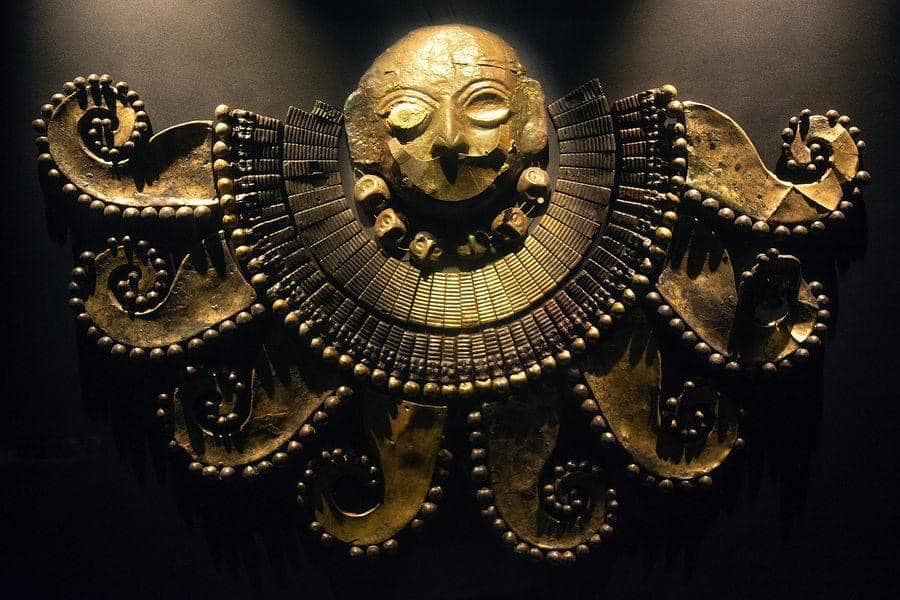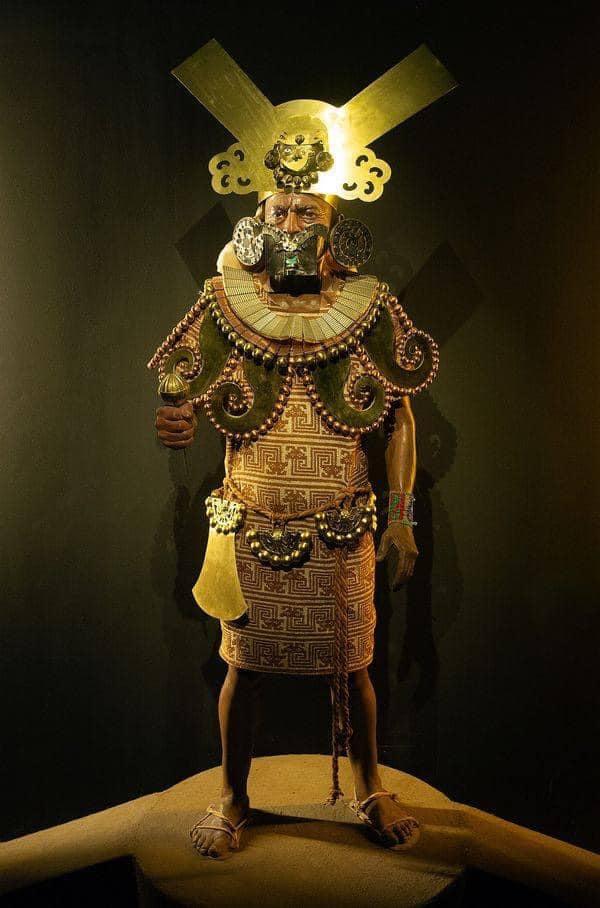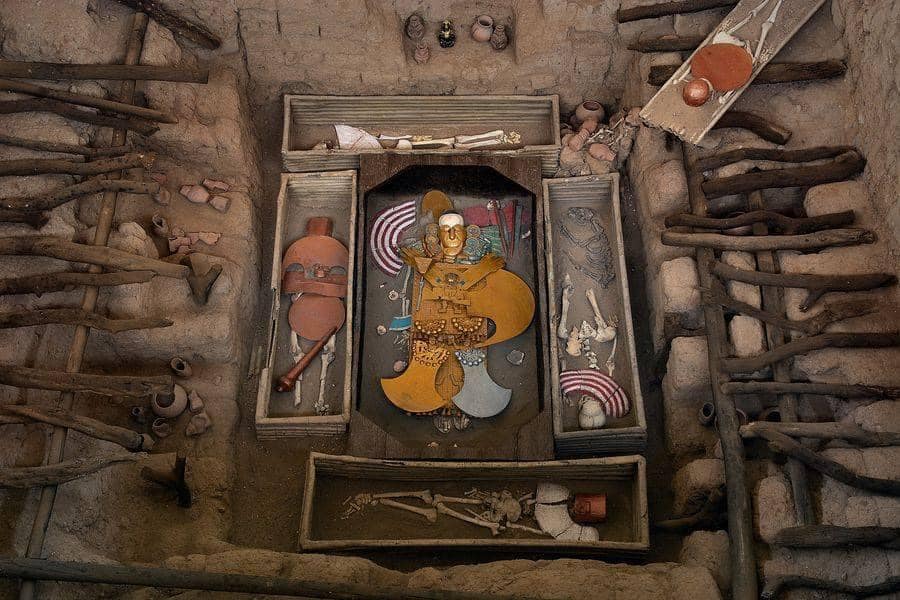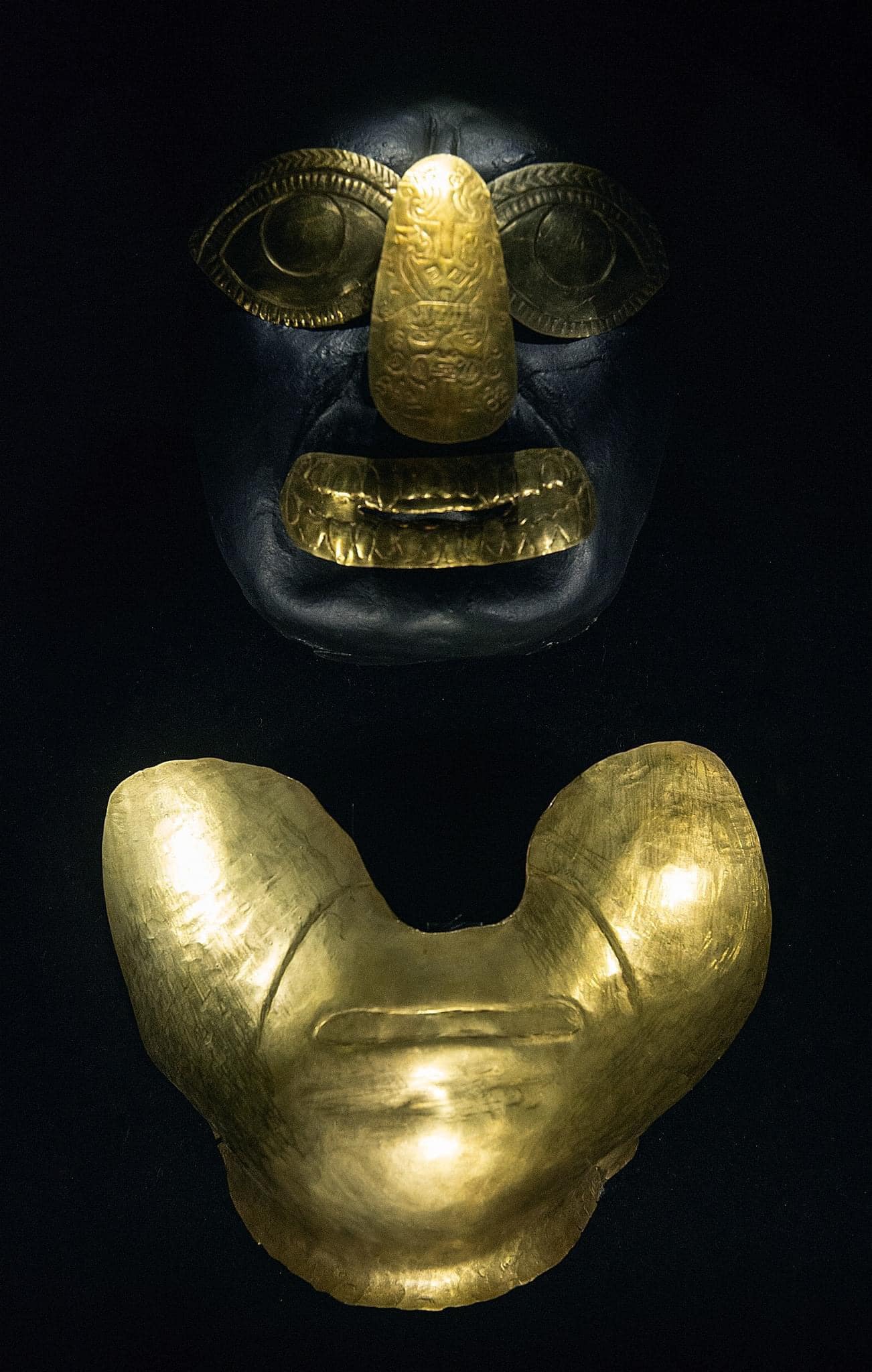In terms of their archeological significance, Huaca Rajada and the Tombs of Sipán are regarded as Peru’s equivalent of Egypt’s King Tut’s tomb.

In terms of their archeological significance, Huaca Rajada and the Tombs of Sipán are regarded as Peru’s equivalent of Egypt’s King Tut’s tomb. Ancient burials throughout the Andes show that for millennia indigenous cultures here believed in an afterlife. They were commonly buried alongside of belongings to accompany them in the spirit world, including their clothing and ornamentation, pottery containing various food and other substances, sacred objects and sacrificial offerings. Because of this practice, these burials provide archeologists much insight into the customs and beliefs of these cultures.
Following the Spanish conquest though, graves across the Americas began to be raided for the treasure they contained. In modern times this practice has continued, with local Peruvians hoping to find gold. Consequently, it’s rare to find tombs that haven’t been looted, particularly of the apex members of these early societies. This has unfortunately permanently erased a lot of the region’s pre-history.

Huaca Rajada contains fourteen separate tombs of the Moche elite, dating from around 50-300 AD. It’s the most complete funerary site that has ever been discovered from any pre-Columbian Andean culture. An entire museum has been erected in the city of Lambayaque to house the numerous artifacts that were excavated here.

Principal among these tombs is the Lord of Sipán. His tomb contained elaborate ceremonial dress made of gold, silver, copper and semi-precious stones. These include a face mask, head dress, chest piece, ear plugs necklaces and nose rings. He was buried alongside of three women (likely wives or concubines), two guards/warriors, two children, two lamas, and a dog.
The vast wealth included of the Lord of Sipán’s tomb suggests that he was the highest ranking member of their elite, and may have been the ruler of the Lambayaque river valley. This was at a stage of Andean civilization before power had consolidated into empires. The Moche culture (100-800 A.D.) stretched throughout Peru’s north coast, where individual river valleys were ruled by separate chiefdoms. These regional rulers oversaw networks of irrigation canals, which increased agricultural productivity within the otherwise harsh coastal deserts.

Mud brick temples spread throughout these valleys served as administrative and ceremonial centers. Burials were often done directly within these structures, where upper rooms were eventually filled in between periods of use, creating a larger temple, with later generations occupying higher layers. Through this ceremonial burial process, the former rulers were regarded as being transformed into immortal ancestors, with the temples themselves taking on the spiritual significance of generations of prior rulers and religious figures.

Common among Andean temples and huacas (sacred places) is for the site to have one or more principal deities. That of Huaca Rajada is the owl, and to a lesser extent, octopus and feline. The Lord of Sipán depicts small owl heads on his headpiece and nose ring ornament. Another tomb contains an individual thought to be a priest or religious figure, whose headpiece also depicts an owl. A small copper statue of an owl found at the site is wearing this priest’s same headpiece and necklace, indicating that he may have been seen as the human embodiment of this owl spirit. His tomb was surrounded by dozens of human shaped ceramic pots depicting religious worshippers.
Xem thông tin chi tiết và quảng cáo
Quảng cáo bài viết
Tất cả cảm xúc:
8888